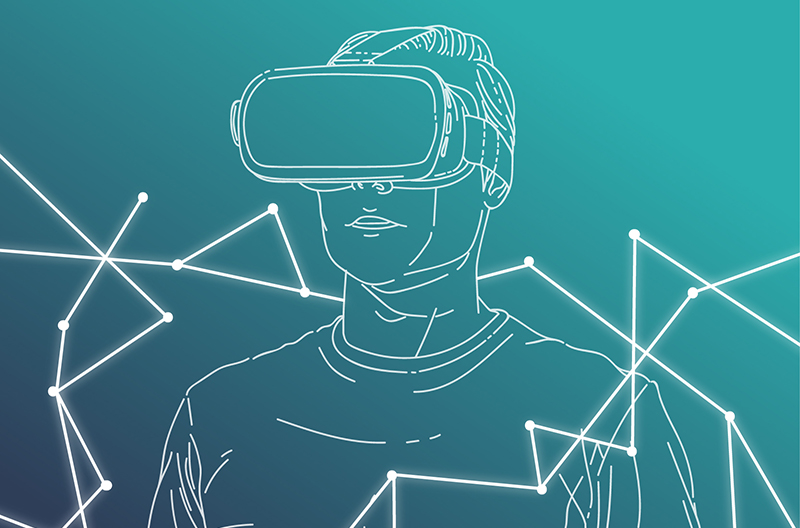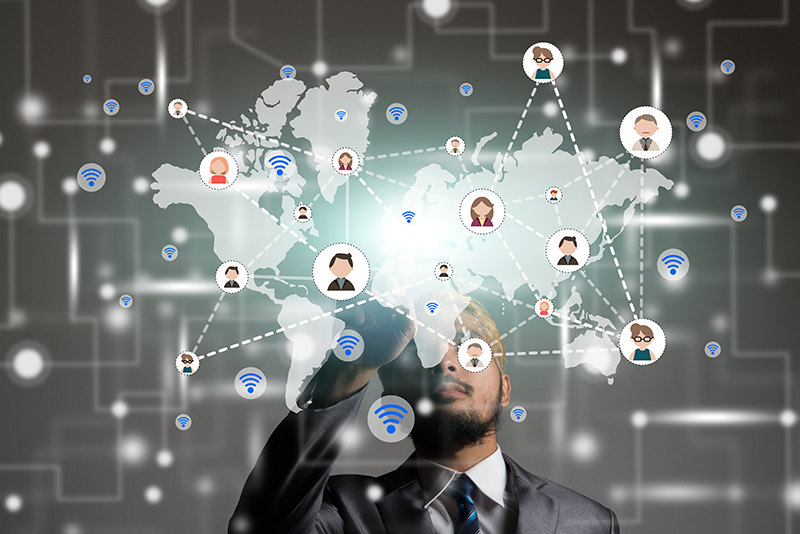
Unless you’ve been avoiding technology news completely or living in a deep deep forest you should be excited about VR. If you have heard about the technology, but haven’t tried an immersive experience of virtual reality yet, you’re missing quite a lot. Initially perceived as a gimmick now virtual reality is ubiquitous in many successful games and apps.
No less popular is the technology of augmented reality or AR. Unlike VR, it doesn’t create a completely virtual world but adds something to the reality instead that changes your perception of the present moment. According to IDC, the global AR/VR industry is expected to reach $162 billion by 2020. So how exactly do VR and AR phenomena work? What’s the difference between them? And what are the best examples of VR app development and AR app development out there? Let’s find out.
AR vs VR vs MR vs 360 video
Today we live in a fast-changing world, in which technology keeps adding its corrections and improvements. With its advancements, people are able to explore and interact with the environment to make new discoveries. Such explorations may include new experiments in entertainment, education, architecture, medicine, arts, sports, etc.
Augmented Reality
Augmented reality or AR is the technology that adds some digital objects to the present experience. It doesn’t create a virtual world but overlays the real one with computer graphics. Usually, such digital overlays can include 3D models and objects, textual data, videos.
Today augmented reality is used in many popular ways. However, if one would like to classify AR then it can fall into three categories: AR Gaming, AR Browsing, AR Viewing. To give examples for each category just think about Pokemon GO. It’s clearly the most successful AR Gaming app as of today. As for the AR Viewing, a telling example of the augmented reality app that uses 3D models attached to the real user environment is Ink Hunter. It’s an app that allows users to try on any tattoo virtually by interacting with their smartphone’s camera in a real time. Finally speaking about AR Browsing simply look at Layar free app. It was started as an AR-enhanced browser and now helps businesses to connect their digital content with the real world.
Other famous examples of augmented reality include Google Glass and Hololens by Microsoft.
Virtual Reality
VR allows people experience an emulated, virtual world, as well as see virtual life-sized 3D images in it and interact with them. It completely shuts out the reality. In order to perceive the technology correctly, one must use special VR systems or headset known as HMDs. It has a screen in front of the eyes. Also, VR apps and games can utilize sound effects and audio through headphones or speakers to achieve even the greater effect on the spectator.
Applications of virtual reality apps are common today and can be found in every field of life. For example, the military uses VR systems for training its soldiers and pilots. In the healthcare industry, VR is widely used for improving the lives of both patients and physicians. A great example of Medical VR is MindMotionPro, which makes early rehabilitation of patients who suffered a brain injury or a stroke easier and faster.
In the entertainment industry, musicians use VR for launching more immersive concert experiences for their fans. Automotive industry embraces VR to give potential buyers of cars an in-depth look into interior and electronics systems of their autos. Audi, Ford, and Volvo are some of the companies who offer VR experiences to enjoy their cars even more.
Exploring faraway destinations using Google Earth is common today. However, visiting remoted exotic destinations through an immersive VR experience like HoloTour is still quite a wonder. Especially, if offered by travel agents or hospitality managers. So businesses in tourism, hotel, and even real estate industry can benefit significantly by impressing potential customers with VR technology.
Mixed Reality
When one combines augmented reality with virtual reality a mixed reality or MR occurs. Sometimes mixed reality is also called hybrid reality. The technology behind mixed reality is more advanced than simple virtual reality. It can be explained as placing a digital object in your real environment and interacting with it according to some pre-programmed scenario. For example, to create a realistic holographic behavior the technology of mixed reality uses special sensors and optics. They help to understand a user’s physical environment and act accordingly.
https://www.youtube.com/watch?v=OvAh5ajfBq8
Some great examples of incredibly mixed reality include Magic Leap and Magic Beans. Today the mixed reality is used for communication, education, entertainment purposes. Expensive nature of mixed reality prevents it from a large-scale adoption. That’s why companies such as Google, Microsoft and other actively work to make MR systems more affordable to all.
360-Degree Video
Immersive videos, spherical videos or 360-degree videos are recordings, in which a view is recorded at the same time in every direction. For shooting 360-degree videos an omnidirectional camera is used. It allows capturing the whole field of view in real time, making it useful for robotics, panoramic photography, concert videos, drone videos, car rides etc. The manufacturers of omnidirectional cameras include GoPro, Facebook, Kodak, Nokia, Axon etc.
Speaking about the difference between virtual reality and 360-degree video we can say that the latter doesn’t let you be fully immersed. Technically even if you wear a special headset to view a 360-degree video you can’t move forward in it. You are able just to look around you without further interactions. This is due to VR using special sensors that react to a user’s head movements, which 360-degree video technology doesn’t utilize.
Numerous examples of fascinating 360-degree video are available on YouTube: Surrounded by Wild Elephants, SkyDive in 360, Mega Coaster: Get Ready for the Drop, Great White Sharks and many other.
VR App Development

The trend of VR app development is on the rise and evolving very fast. So no wonder that businesses are looking for experienced VR app developers who are skilled in creating immersive new apps and games.
Generally developers today build VR apps using two most popular engines for gaming: Unreal and Unity. Both platforms let developers create immersive VR experiences ready for use with VR software and hardware. For example, Oculus Rift, Playstation VR, Google VR, Steam VR, Leap Motion, Samsung Gear VR etc.
What else is unique about VR app development? The fact that many VR app developers prefer to work with their VR headsets on. So yes, VR developers actually develop their apps in VR. Software such as Bigscreen assists them in that. Also, VR developers choose among SDKs (software development kit) that they require working with: either SDK for Google VR, the one for Oculus or SteamVR.
Until now VR app development hasn’t reached its mass popularity and usage. It’s still captivating and fascinating, yet not the cheapest technology to enjoy every day. Nevertheless, with the advancement of the VR, the leading manufacturers of VR hardware will be able to produce cheaper options for the public. So it’s high time for your business to start developing VR apps. It means that you’re on time when the VR technology hits every home and office.
AR App Development

What’s great about AR app development is that it’s already everywhere in mobile apps that aim to provide an enhanced user experience. AR apps use smartphone cameras to view extra videos, textual data or other multimedia content.
As for the principle of their work, AR apps fall into two categories. The marker-based AR apps and location-based AR apps. Based on the position of a given mobile device the latter type of AR apps is able to provide contextual info on real objects. From a marketer’s point of view, such contextual data may include helpful tips or directions to some shops or restaurants, locating a car in a parking place etc.
Some location-based AR apps even let you identify a particular star in a constellation in the sky. On the other hand, marker-based AR apps work by identifying certain patterns (such as logos, QR codes etc) and superimposing a digital layer on them in the real world. For example, by pointing a camera of a smartphone onto the printed movie poster at the cinema one is able to view a movie trailer, which has been virtually overlaid on the poster.
To Sum Up
To develop AR apps and VR apps one must have a sufficient expertise in image processing. Realistic images and seamless user experience is what AR/VR app users expect and will count for in the nearest future. By the way, do you have your in-house team of developers or want to outsource? There is an article about 3 tips that will help you with outsourcing your mobile app effectively.
Adoriasoft has over 8 years of developing mobile apps and software solutions that use sophisticated image processing techniques, as well as advanced programming algorithms. Moreover, we have best C# and C++ developers on board. And those programming languages are used for AR/VR app development most often.
We are ready to offer both AR app development and VR app development services to make your idea come true. Contact Adoriasoft today to get a consultation on AR/VR app development for free! Let’s do everything possible to provide your app users’ with realistic immersive experiences they will love.
